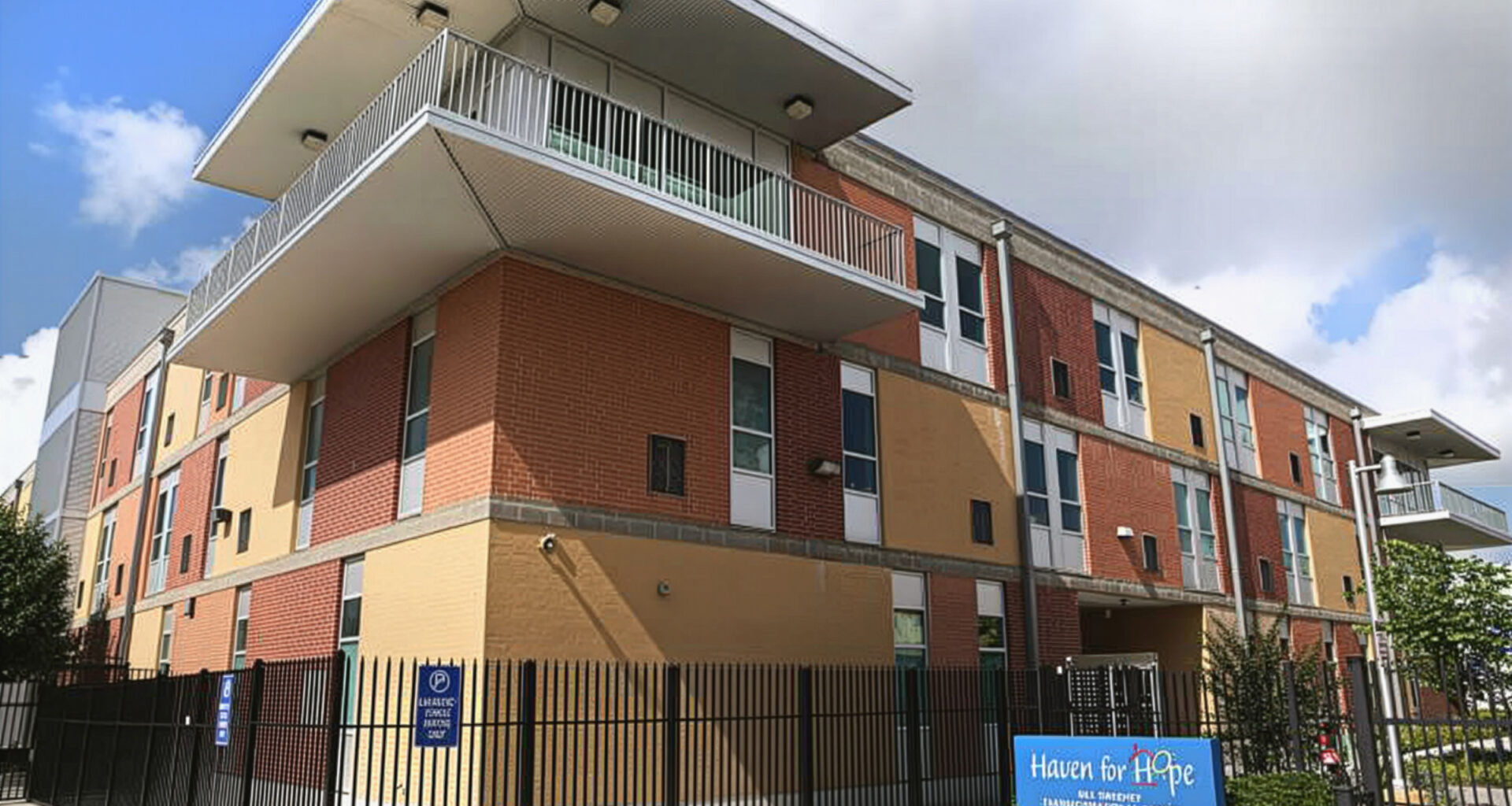Sponsored by:
San Antonio and Bexar County’s homeless response system, which includes dozens of coordinated nonprofits, private and public service providers, has kept the rate of homelessness relatively flat for the past several years.
But the demand for emergency shelter is outpacing capacity, and this system is under immense strain.
Never miss San Antonio Report’s biggest stories.
Sign up for The Recap, a newsletter rundown of the most important news, delivered every Monday and Thursday.
Factors such as behavioral health, underemployment, substance use, and the rising cost of housing/living leave many individuals and families on the brink of homelessness. Haven for Hope, a nationally recognized transformational shelter and services campus, has been overflowing with families and individuals sleeping on mats on floors (in spaces not designed for sleeping) for years. And unsheltered homelessness is on the rise, according to this year’s Bexar County point-in-time (PIT) count.
“On the night of the PIT Count … 495 ‘overflow’ beds were available and offered to unsheltered individuals,” the 2025 State of Homelessness Report states. “To provide a bed to everyone who was unsheltered on the night of the PIT Count, an additional 641 beds were needed.”
Upcoming bond and budget decisions present a critical moment. If we want a safer, healthier, more compassionate city, we must invest in emergency shelter and supportive services now. That means supporting new permanent shelter options with wraparound services, and continuing to build affordable housing options in our community.
A bold investment
Haven for Hope goes beyond the offerings of a typical shelter. Our powerful component of San Antonio’s homeless response system collaborates with more than 75 service providers that work on- and off-campus to provide clients with wraparound support.
Since opening its doors in 2010, Haven and our incredible partners have helped thousands of individuals and families move off the streets — or prevented them from becoming unsheltered — and find permanent, affordable housing. Last year alone, more than 9,800 people came through our doors for safe refuge. They found more than a bed, they found a connection to medical care, addiction recovery, benefits navigation, behavioral health services, job training, peer support and housing — tools that help them rebuild their lives. We do this because Haven’s clients — and our partners’ clients — are our community’s sons, daughters, fathers, mothers, friends, neighbors and colleagues.
Since inception, 11,482 Haven clients left our programs for permanent housing, and 7,852 clients found job placements.
Emergency shelter with access to resources is the critical first step for unhoused individuals, offering immediate safety and stability.
This success didn’t happen by chance. Haven was built on a bold philanthropic and public investment. San Antonio chose to do something different — and, for many, it worked.
A bed for all
Operating beyond Haven’s intended capacity, as we have for the past three years, is not sustainable. It compromises the quality of care and undermines our commitment to trauma-informed care. Our strategic plan aims to restore Haven’s original bed capacity — about 1,400 beds — to ensure that every client receives the dignified, person-centered support they need to achieve self-sustainability.
Contrary to popular belief (and previous practices at Haven), no one sleeps outside. Everyone sleeps inside on bunk beds, beds or mats inside various buildings across our 22-acre campus. With our recently launched “Bed for All” initiative, we aim to ensure that everyone has a bed to sleep on, off the ground, by the end of 2027. Based on recent data, clients who sleep in bunks and have increased engagement with case management are three to four times more likely to exit Haven into stable housing compared to those who sleep on mats.
Haven will be adding four case managers dedicated to serving the men and women in our low-barrier shelter (previously known as “The Courtyard”) over the next year. This initiative is part of our strategy to increase client engagement and improve healing and housing outcomes for our clients.
Emergency shelter is not a luxury; it is the essential first step. Without enough shelter beds, people are forced to remain on (or turn to) the streets, where chances of recovery and housing dramatically decline while their risk of abuse, illness, and addiction increases. Early intervention — especially shelter — is a key component in preventing chronic homelessness.
Affordable and supportive housing alone won’t fix this. Outreach alone won’t fix this. Haven for Hope alone won’t fix this. It takes a coordinated system meeting individuals where they are and providing not only shelter and case management, but prevention services and easy access to the resources our community members need in their time of need. It also takes continued funding and support for our community’s homeless response system.
San Antonio has a legacy of civic innovation. Let’s continue to innovate and choose to invest in shelter and services, not just as a structure, but as a promise. A promise that no one is beyond help and every person has a right to a safe place off the street. A promise of new beginnings, and that hope still works.
David Huete, Vice President of Programs, Haven for Hope
Are you doing your part?
You’ve read unlimited of unlimited articles this month. That’s right — we’re committed to providing free, fair journalism for all.
But without donor support, our nonprofit newsroom can’t do its job to inform and empower your community.
Are you in? Your donation of any amount will help keep articles like this one accessible to all San Antonians.

